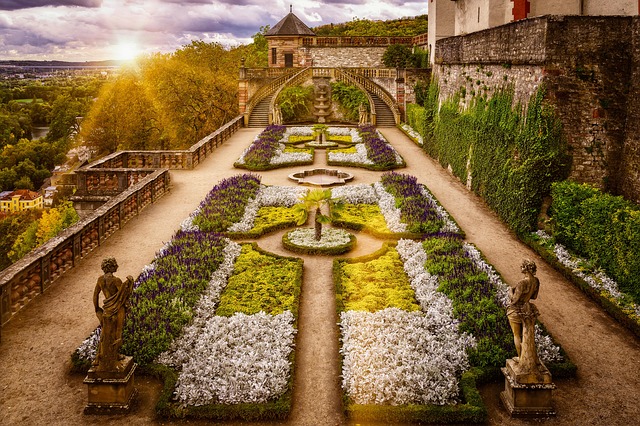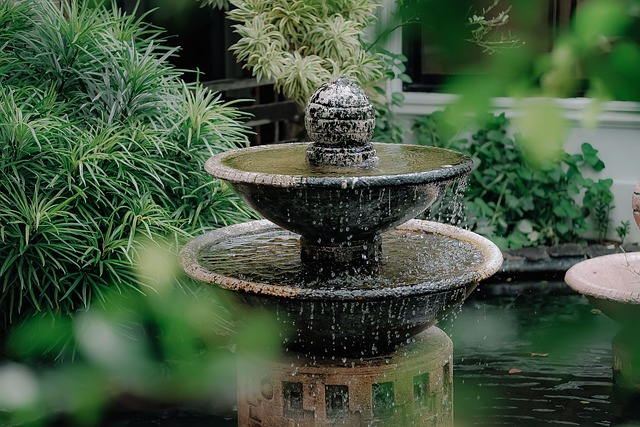Vertical garden installations transform urban spaces by integrating nature into walls and structures, offering visual appeal, functional benefits like improved air quality and heat island mitigation, and customizable designs for diverse plant types. These systems, with meticulous planning, innovative assembly, and regular maintenance, revolutionize green spaces in densely populated areas while enhancing both the aesthetic and functional value of buildings.
“Unleash the potential of urban spaces with custom vertical garden systems—a revolutionary approach to green infrastructure. This article explores the transformative power of vertical gardening, offering an in-depth look at its benefits for densely populated areas. From understanding the basics to design inspiration and installation guides, we cover all aspects. Discover how these gardens enhance aesthetics, improve air quality, and provide sustainable solutions. Get ready to embark on a journey towards greener cities.”
- Understanding Vertical Garden Installations: An Overview
- Benefits of Custom Vertical Garden Systems in Urban Spaces
- Types and Design Options for Vertical Gardening
- Installation Process: From Planning to Realization
- Maintenance Tips for Thriving Vertical Gardens
Understanding Vertical Garden Installations: An Overview

Vertical garden installations are a modern and innovative way to bring nature into urban spaces, offering both aesthetic appeal and practical benefits. These systems involve creating lush green environments vertically, utilizing walls or structures instead of traditional horizontal gardening methods. By maximizing vertical real estate, vertical gardens can transform any space into an oasis, from rooftops and facades to indoor walls.
An overview of these installations reveals a careful balance between design and functionality. Custom vertical garden systems are designed to accommodate various plant types, from small succulents to larger foliage, depending on the available space and desired aesthetic. The structures often incorporate irrigation and drainage systems, ensuring efficient watering and nutrient delivery while maintaining optimal growing conditions for the plants. This approach not only promotes a greener environment but also has positive impacts on air quality and urban heat island effects.
Benefits of Custom Vertical Garden Systems in Urban Spaces

Custom vertical garden systems are transforming urban spaces by offering a unique and sustainable solution for green areas in densely populated cities. These installations provide numerous benefits, making them an increasingly popular choice for urban planners, architects, and homeowners alike. One of the primary advantages is their ability to maximize space utilization, as they can be installed on walls or structures that would otherwise remain unused, creating vibrant green oases in concrete jungles.
Additionally, vertical gardens contribute to improved air quality by absorbing pollutants and releasing oxygen, enhancing the overall well-being of city dwellers. They also play a crucial role in mitigating urban heat islands by providing natural insulation and reducing the need for energy-intensive cooling systems. Furthermore, these custom systems can be tailored to suit specific design aesthetics, offering both functional and aesthetic value that complements surrounding architecture.
Types and Design Options for Vertical Gardening

Vertical gardening is a space-saving and innovative approach to cultivating plants, offering a diverse range of design options for both residential and commercial spaces. One popular type is the freestanding vertical garden, which can be customized with various plant configurations and media, such as soil or hydroponics. These structures often feature multiple layers or shelves, allowing for a rich variety of flora to thrive vertically.
Another option is the integrated vertical garden system, where greenery is seamlessly incorporated into architectural elements like walls or fences. This design approach can transform ordinary surfaces into living walls adorned with moss, vines, or colorful blooms. With custom vertical garden installations, designers and homeowners alike can choose from an array of styles, including modern minimalist designs, rustic natural looks, or even artistic themes, catering to diverse aesthetic preferences while enhancing outdoor or indoor environments.
Installation Process: From Planning to Realization

The installation process for custom vertical garden systems begins with meticulous planning, ensuring a successful and aesthetically pleasing outcome. This involves assessing the available space, considering structural integrity, and determining the best location for the garden. Professionals carefully evaluate factors like sunlight exposure, proximity to water sources, and drainage to create an optimal growing environment. Once the site is finalized, they procure the necessary materials, including sturdy frames, growing media, and a variety of plants tailored to the specific microclimate.
The realization phase involves precise assembly and configuration of the vertical garden components. Skilled artisans securely attach the frames, carefully place the growing medium, and thoughtfully arrange the plant selection according to their unique requirements. This meticulous craftsmanship ensures efficient water distribution and nutrient access for optimal plant growth. The final step includes thorough testing of the irrigation system and a visual inspection to guarantee the vertical garden’s structural integrity and beauty before its grand reveal.
Maintenance Tips for Thriving Vertical Gardens

Maintaining a vertical garden is an exciting yet rewarding endeavor, allowing you to enjoy a lush green oasis in even the smallest of spaces. To ensure your vertical garden installations thrive, consider these essential maintenance tips. Firstly, regular cleaning is key; remove any dust or debris that may accumulate on the plants and growing medium. This simple step promotes optimal light penetration and prevents fungal issues. Secondly, monitor soil moisture levels consistently; vertical gardens often require more frequent watering due to their elevated placement and enhanced transpiration rates. Adjust watering schedules according to seasonality and environmental factors for healthy plant growth.
Additionally, trim and prune your plants regularly to maintain a balanced structure and encourage new growth. Remove any dead or yellowing leaves promptly to prevent disease spread. Pest management is another crucial aspect; inspect your garden frequently for common vertical garden pests like aphids and spider mites. Organic pest control methods are effective and environmentally friendly. Lastly, consider seasonal plant rotations to keep your garden vibrant and diverse, ensuring continuous visual appeal throughout the year.
Custom vertical garden systems offer a revolutionary approach to urban greening, transforming sparse concrete jungles into vibrant oases. By harnessing the power of vertical space, these installations not only enhance aesthetics but also provide numerous benefits, from improved air quality to reduced maintenance costs. With various design options and an installation process tailored to specific needs, vertical gardening represents a sustainable and aesthetically pleasing future for urban spaces.
